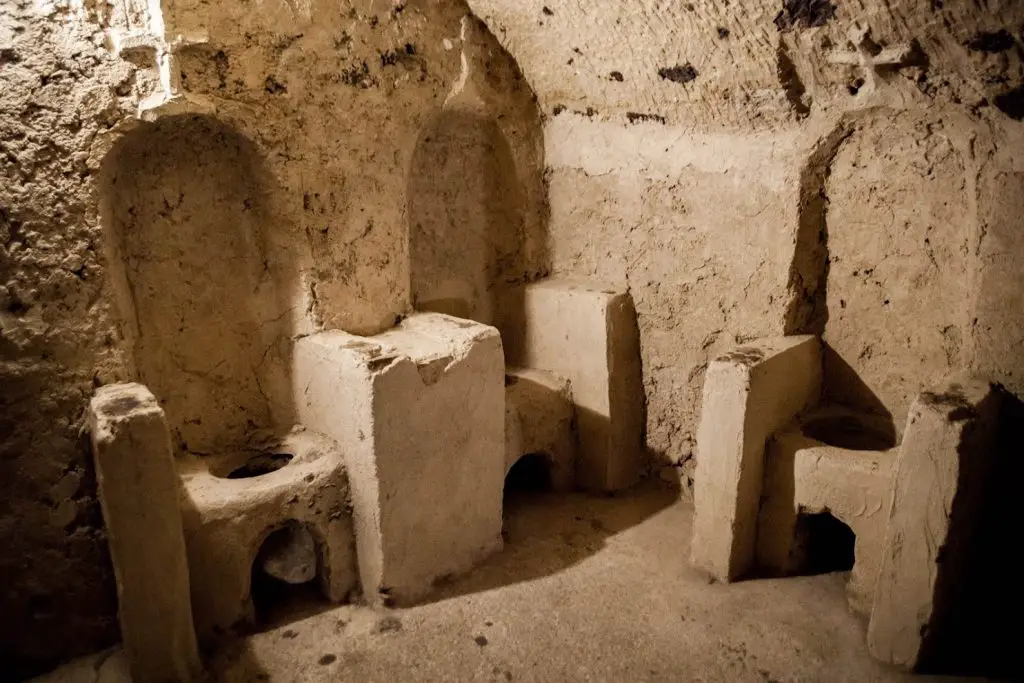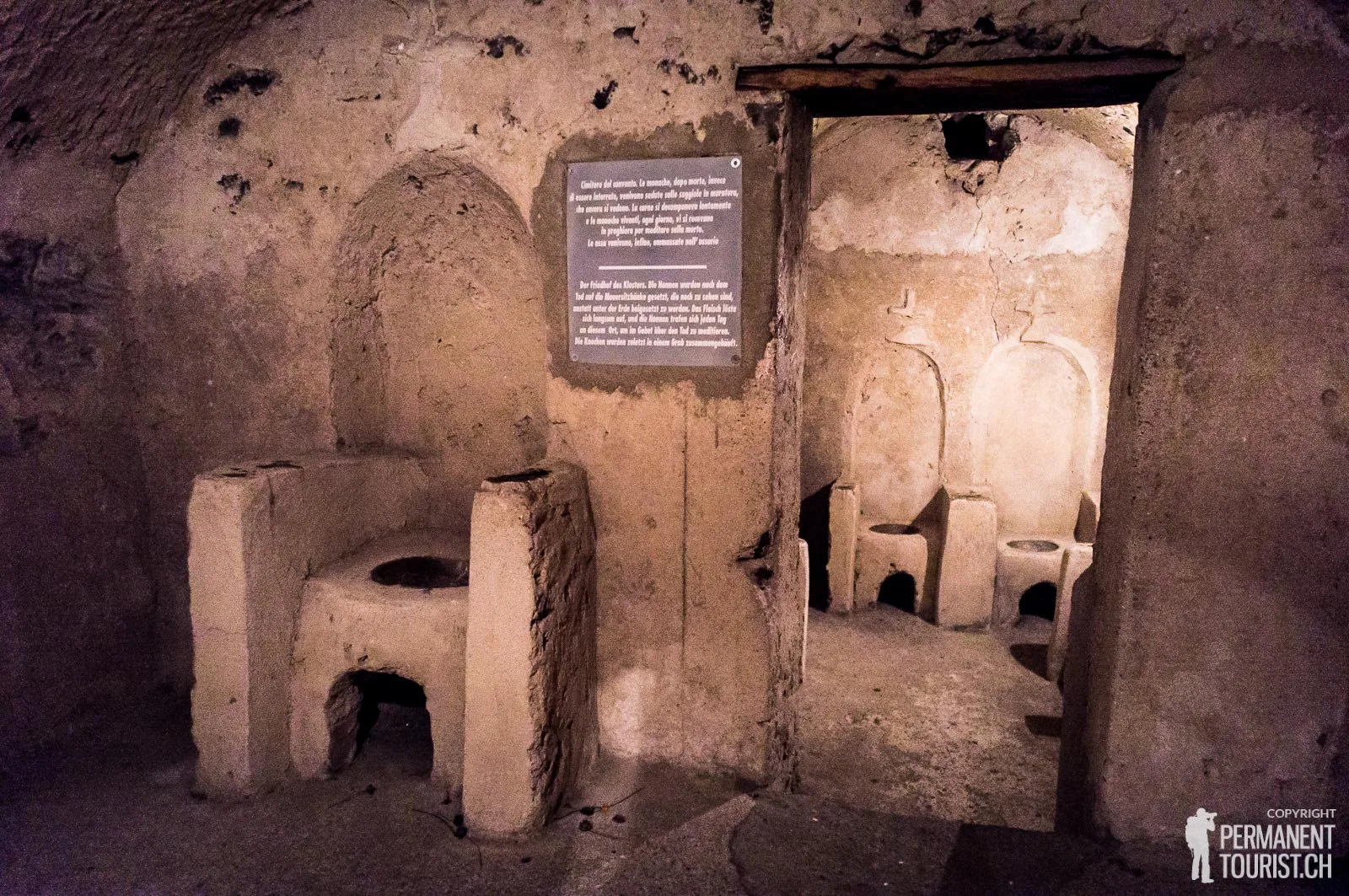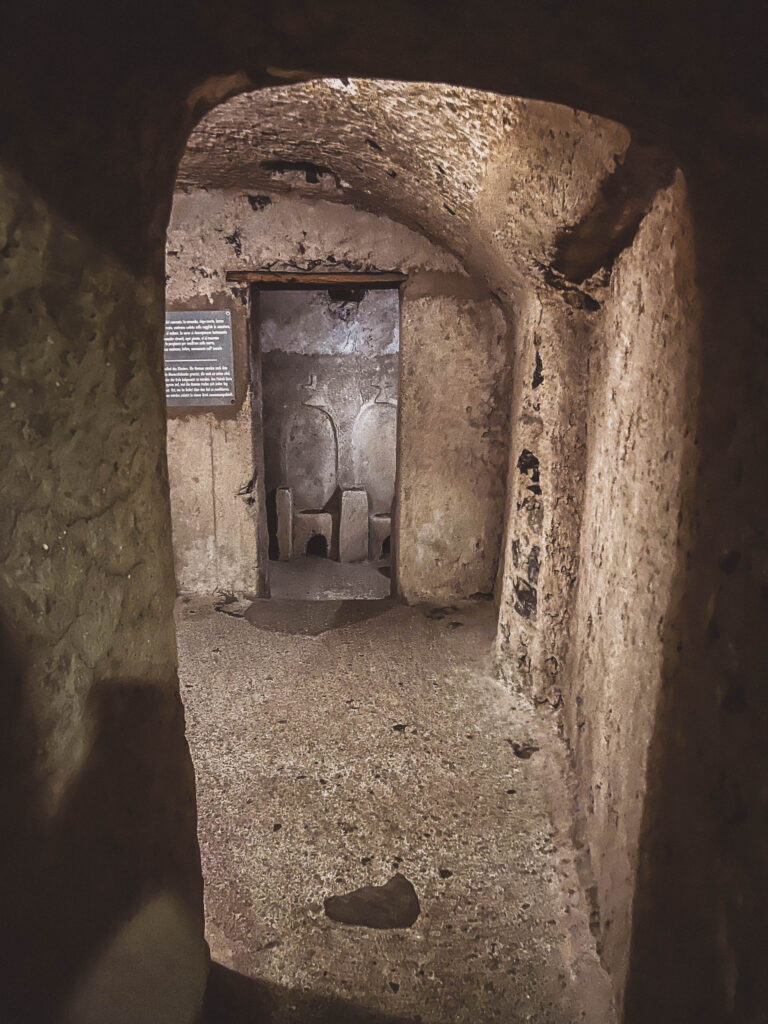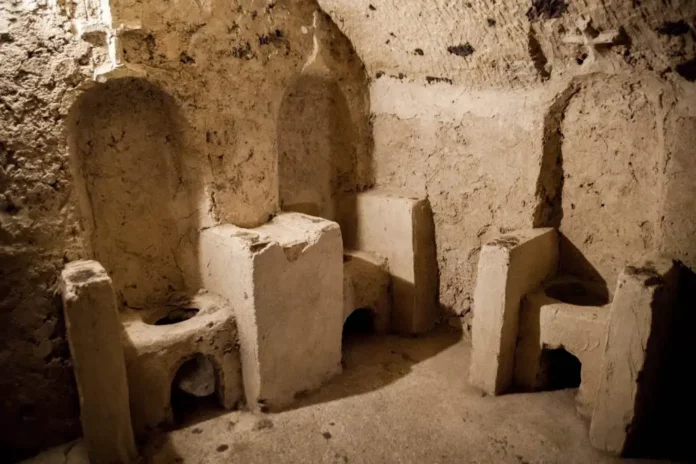The Aragonese Castle, perched atop a rocky islet next to the Italian island of Ischia, is a medieval fortress with a rich history. Among its many stories, one of the most unique and unsettling is the tale of the ‘death chairs’ used by the nuns of a convent that once stood within the castle’s walls. These stone chairs served a grim purpose, holding the bodies of deceased nuns as they decomposed—a ritual that speaks volumes about the practices and beliefs of the time.
The Ancient Origins of Aragonese Castle

The site of the Aragonese Castle has been in use since the 5th century BC, during a period when southern Italy was heavily populated by Greek settlers. The first fortification on this islet was erected in 474 BC by Gerone I, a tyrant of Syracuse. Over the centuries, the islet changed hands numerous times, with the Romans, Arabs, Normans, and Angevins each leaving their mark on its structures. However, it was Alfonso of Aragon, a 15th-century king of Naples, who made the most significant contributions to the castle’s development.

Under Alfonso’s rule, the Angevin castle, which had been abandoned after a volcanic eruption in 1301, was rebuilt and fortified. Alfonso also constructed a 220-meter-long stone bridge connecting the islet to Ischia, providing a vital link for the islet’s inhabitants, who sought refuge from pirates and other threats.
Origins of the ‘Death Chairs’

The chilling practice associated with the ‘death chairs’ began in the 16th century, during the time when the Aragonese Castle housed a community of nuns from the Order of Saint Clare, also known as the Poor Clares. Between 1575 and 1810, these nuns followed a peculiar and macabre burial ritual. Upon the death of one of their own, the nuns would place the corpse in a sitting position on a stone chair, known as a ‘death chair’, within their cemetery, the ‘Cimitero delle Monache Clarisse’.
This practice was not unique to the Poor Clares but was part of a broader regional tradition known as a putridarium. Each death chair featured a hole in its seat, beneath which a vessel was placed to collect the fluids released during decomposition. Once the body had fully decomposed, the bones were gathered and stored in an ossuary.
Visiting the Dead: A Daily Ritual

The living nuns would visit the cemetery daily, where they would pray for their deceased sisters. These visits served not only as a spiritual exercise but also as a somber reminder of their own mortality. However, spending so much time in close proximity to decomposing bodies was hazardous to their health, and many of the nuns suffered from serious illnesses as a result.
In 1809, the Aragonese Castle was shelled by the British forces, who were targeting the French occupants. The damage led to the abandonment of several buildings within the castle, including the convent. By the following year, the Poor Clares had left the castle for good. Today, while the convent no longer exists, the ‘death chairs’ remain as a haunting testament to the nuns’ presence and their macabre burial practices.
Conclusion
The Aragonese Castle, with its medieval fortifications and rich history, is a site that draws visitors from around the world. Among its many intriguing stories, the tale of the ‘death chairs’ stands out for its macabre nature. These stone seats, once used by the nuns of the Poor Clares, serve as a chilling reminder of the past, offering modern visitors a glimpse into the unique and unsettling rituals of a bygone era.
